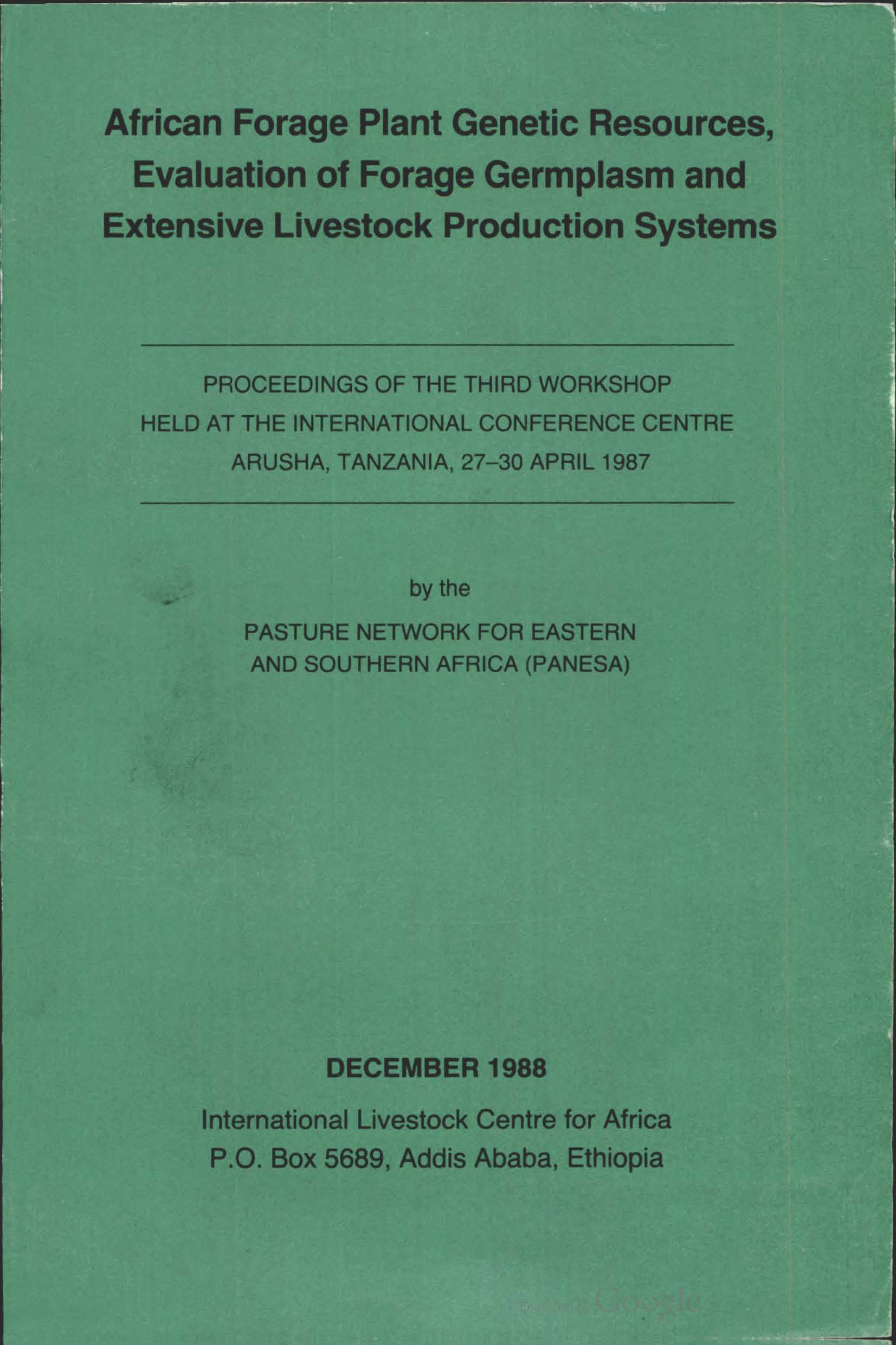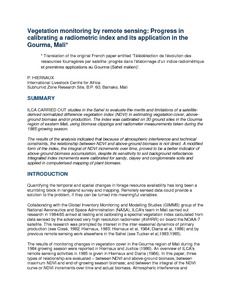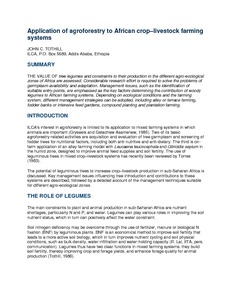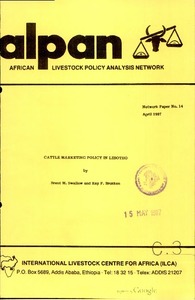Vegetation monitoring by remote sensing: Progress in calibrating a radiometric index and its application in the Gourma, Mali
Evaluates relationship between NDVI (nomalized difference vegetation index) and above-ground biomass, between maximum NDVI and end-of-growing season biomass; and between the integral of the NDVI curve or NDVI increments overtime and actual biomass. Describes atmospheric interference and technical problems affecting the special vegetation index.
Production Animale Dans Les Regions D'Afrique Infestees Par les Glossines
Grassland Management Regulations of Haibei Tibetan Autonomous Prefecture.
These Measures are formulated in accordance with the Grassland Law of the People’s Republic of China. The Text consists of 31 Articles divided into 5 Chapters: General Provisions (I); Grassland Ownership and Use Right of Grasslands(II); (III); Grassland Protection and Utilization (III); Reward and Punishment (IV); Supplementary Provisions (V).
Enclosure if the East African rangelands: recent trends and their impact
This article discusses the enclosure of rangelands and registration of exclusive rights to grazing by individuals or groups of pastoralists. This trend has been increasing greatly over the last twenty years. This occurs because:it is encouraged by governments, planners and multi-lateral donor agencies in an attempt to 'rationalise'the use of rangelands.
The decline of Lahawin pastoralism: Kassala Province, eastern Sudan
This article investigates the encroachment on pastoralist grazing land in Sudan (as a result of the mechanised farming in the Sudan).
Animal feed resources for small-scale livestock producers. Proceedings of the second PANESA workshop
Presents papers on inventory of animal feed resources in Kenya, Tanzania, Ethiopia, Zimbabwe, Malawi, Burundi, Madagascar, Botswana, Swaziland and Mozambique, research and development experiences in Kenya, Tanzania, Burundi and Zimbabwe; socioeconomic aspects of feed resources; and regional/sub-regional research programmes.
Application of agroforestry to African crop-livestock farming systems
Discusses the potential of leguminous trees to increase crop-livestock production in sub-Saharan Africa. Describes major management issues influencing tree introduction and contributions to the system. Gives a detailed account of the management techniques suitable for different agro-ecological zones.
Cattle marketing policy in Lesotho
The Lesotho cattle industry is characterized by overstocking, range degradation, low marketed offtake, low fertility, and high mortality. The overstocking situation is paradoxically accompanied by an ownership pattern which leaves many households with an insufficient number of cattle for draught purposes, and the abscence of a large commercial beef sector. In this setting a number of analysis have suggested that the increased provision of market outlets would allow Basotho to sell surplus culled animals which would in turn promote reduced stocking and increased productivity.








